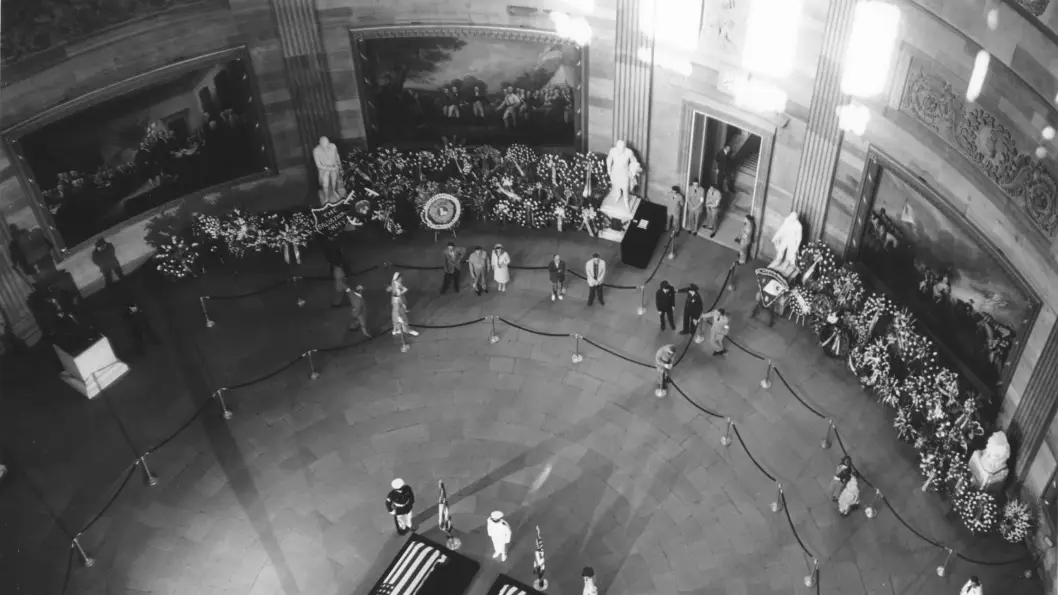When the Unknown Soldier laid in state at the Capitol

SUMMARY
The Tomb of the Unknown Soldier is rightfully some of the most hallowed ground in the United States. It not only memorializes the sacrifice of thousands of men and women throughout our history, but it also serves as the symbolic grave of the families whose loved ones were forever lost on foreign battlefields. The Unknowns resting there are decorated for the valor of the fellow service members they represent.
And during ceremonies in 1921, 1958 and 1984, the remains of the Unknown Soldiers laid in state in the Capitol Rotunda. The ceremonies took place before each unknown casualty was interred at Arlington National Cemetery. Political leaders and tens of thousands of Americans came to pay respect and to remember the wars that the men died in as well as the enormous sacrifice of the families represented by each man.
The Unknown Soldier
The Unknown Soldier is a bit of a misnomer. The casualties may be of any service branch. Indeed, the one unknown casualty later identified was an Air Force officer and pilot, 1st Lt. Michael Blassie.
The idea for an unknown soldier memorial came from the French and English after World War I. Those countries, unable to reinter the millions of remains lost on the battlefields of World War I, established Tombs of the Unknown in their own countries with each casualty representing all those lost in the war.
America had fewer casualties and more resources, so it repatriated many of its lost service members. (Over 130,000 remain buried on foreign soil.) But the U.S. still valued the idea of a resting place that represented all those unidentified, whose families had no physical place in the U.S. or overseas to mark their loved one's passing.
So, the country established a tomb in 1920 and began a process to ensure the remains would be unknown.
The World War I Unknown Soldier
The World War I unknown soldier returned to the United States aboard the USS Olympia on November 9, 1921, and laid in state at the Capitol Rotunda from November 9-11. On November 11, then known as Armistice Day, a procession moved the remains to the newly created Tomb of the Unknown Soldier.
About 90,000 Americans paid their respects at the Capitol Rotunda, including Gen. John Pershing.
The World War II and Korean War Unknowns
The outbreak of the Korean War delayed the selection of the World War II unknown, and so the unknown casualties of both wars returned together to the United States on May 28, 1958. Again, a procession accompanied the remains to the Capitol Rotunda, where they lay in state.
An estimated 28,000 people paid their respects at the Capitol Rotunda from May 28 to 30. Another 100,000 lined the streets as the two Unknowns moved from the Capitol to Arlington National Cemetery and The Tomb on Memorial Day 1958.
Vietnam War Unknown

The Vietnam War Unknown remains sailed back to America on the USS Brewton in May 1984. The Unknown flew from California to Andrews Air Force Base, Maryland on a C-141 plane and laid in state in the Capitol Rotunda from May 25 to 28, 1984. President Ronald Reagan gave remarks at the ceremony on May 25 after the remains arrived at the rotunda.
As he finished his speech, President Reagan prayed that the remains would be America's last Unknown. That prayer came true. Investigators later identified the Vietnam War Unknown. And the military has identified its casualties in recent conflicts.
SHARE
